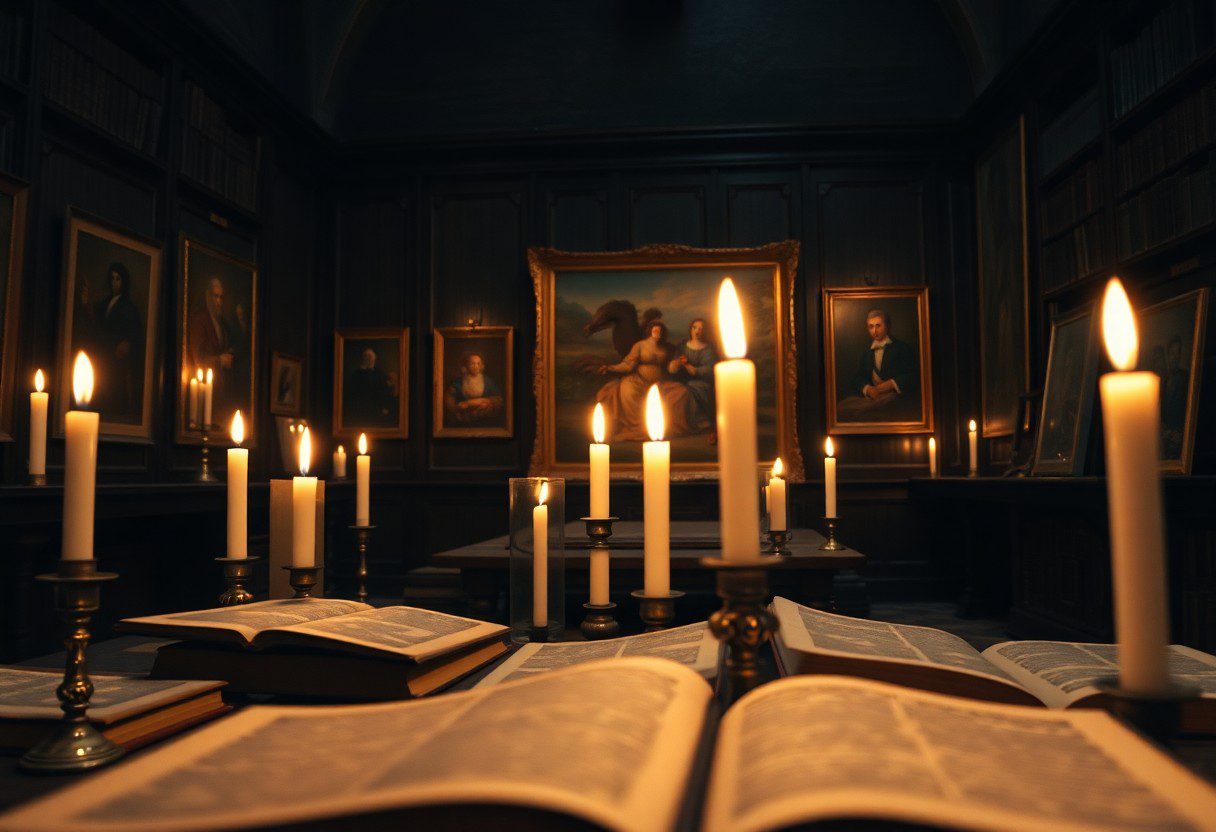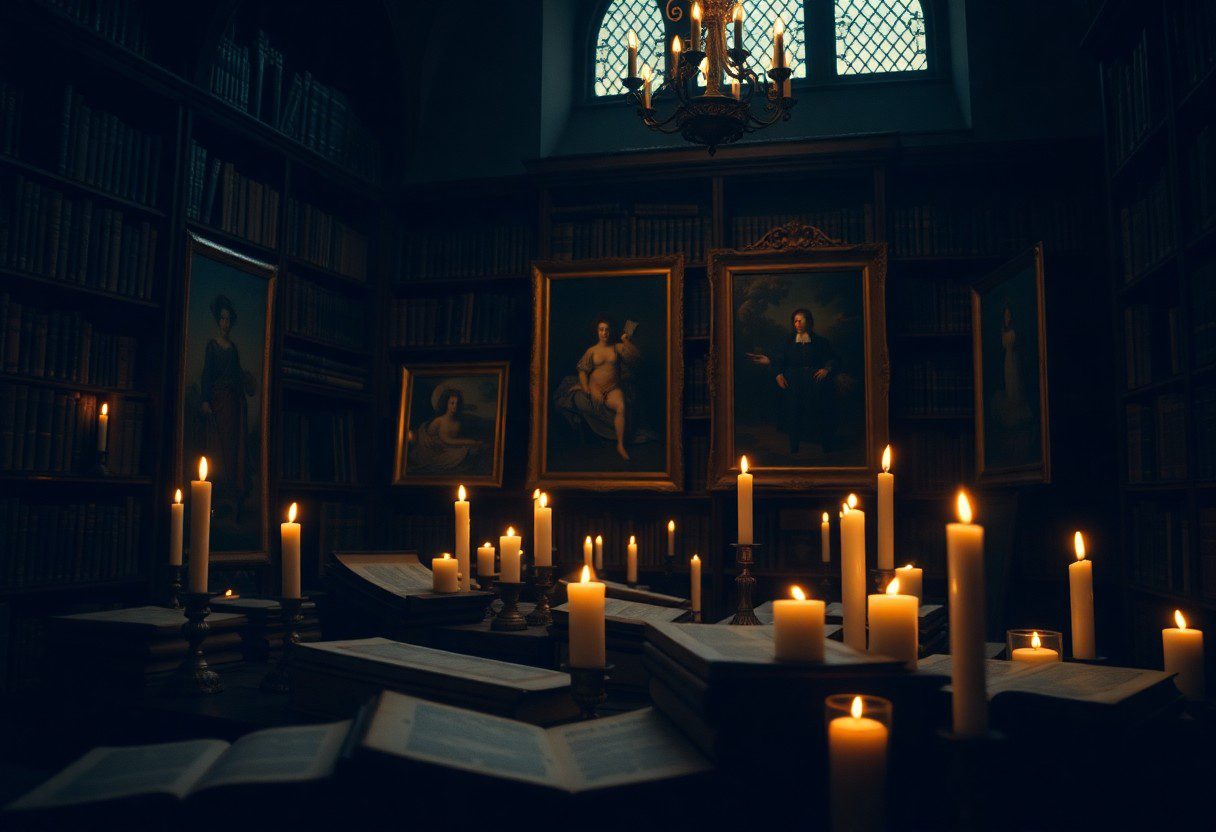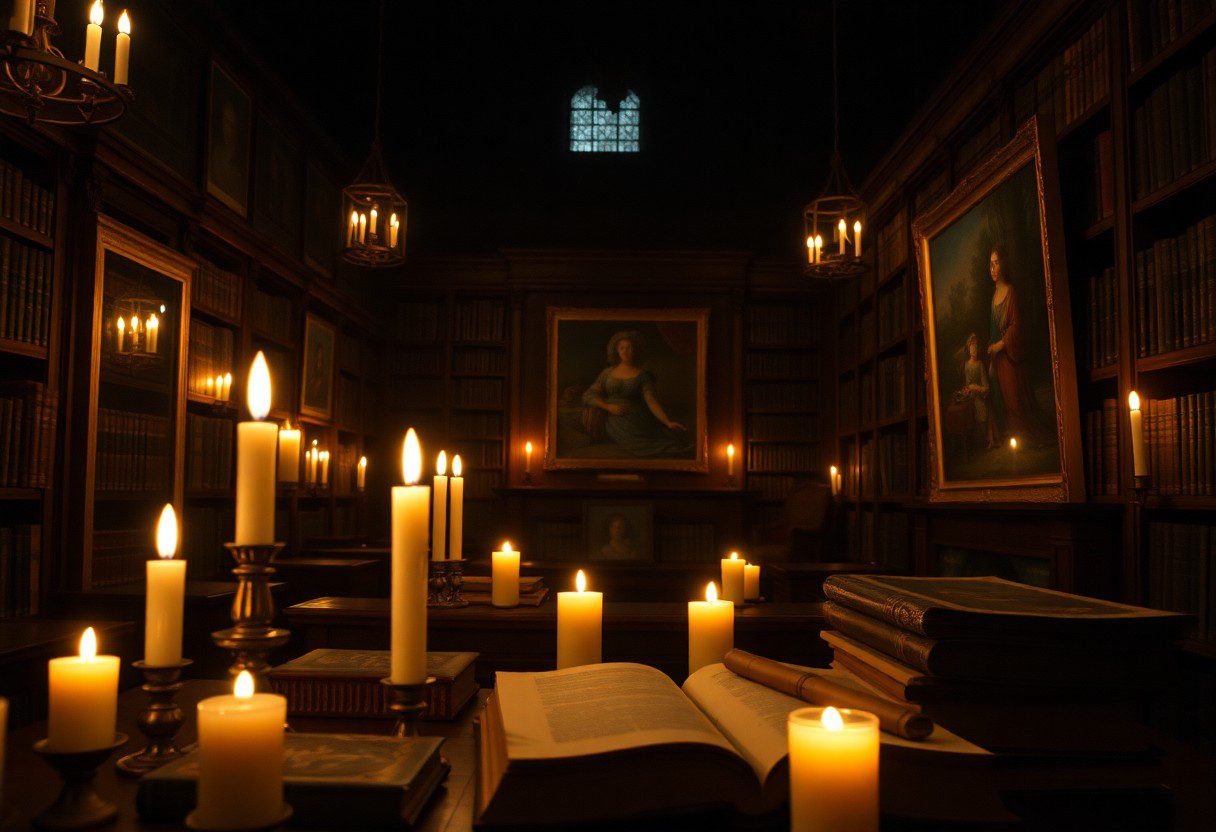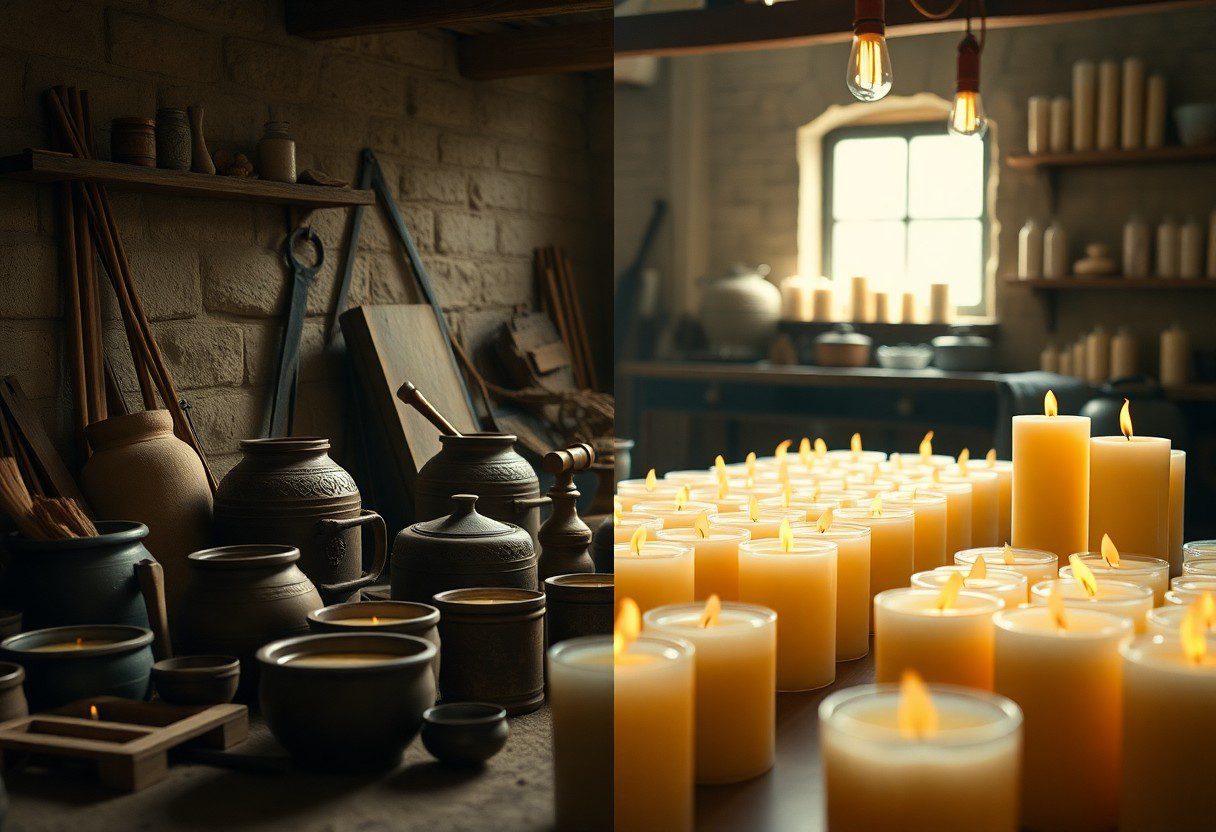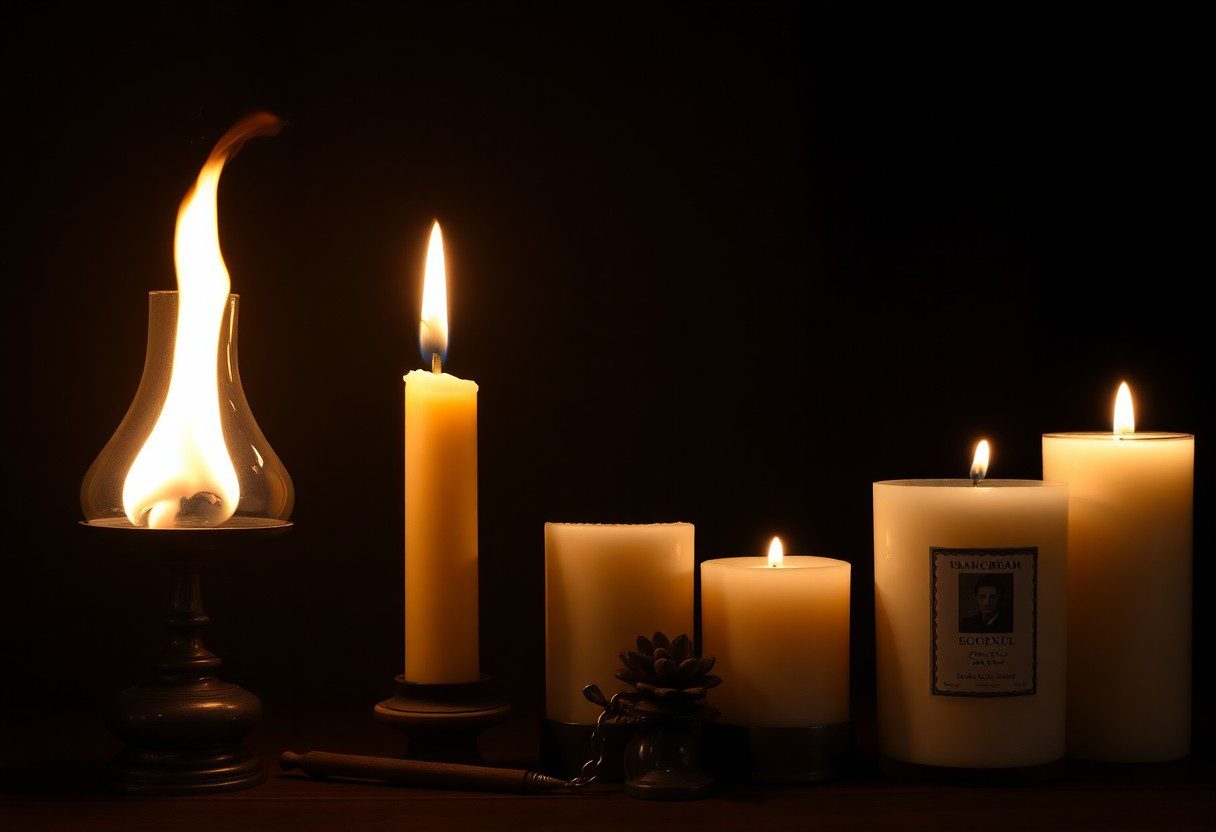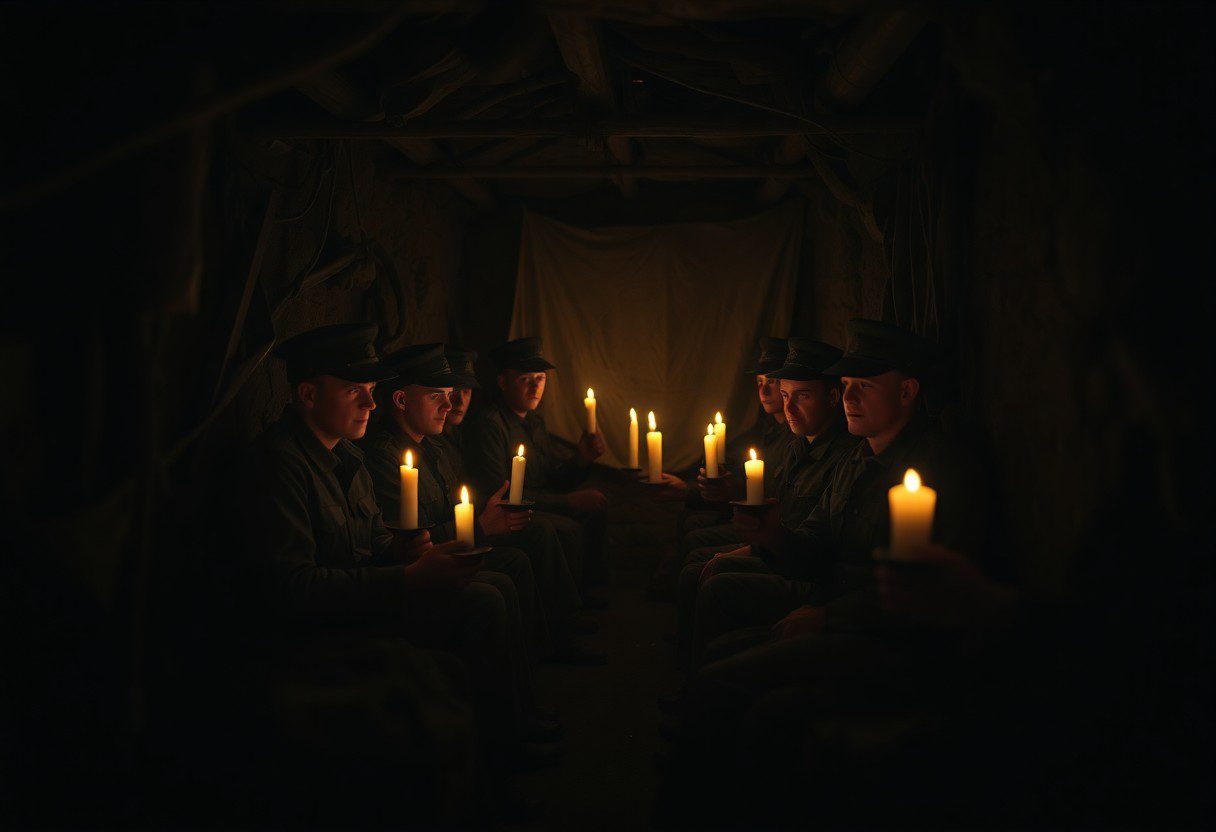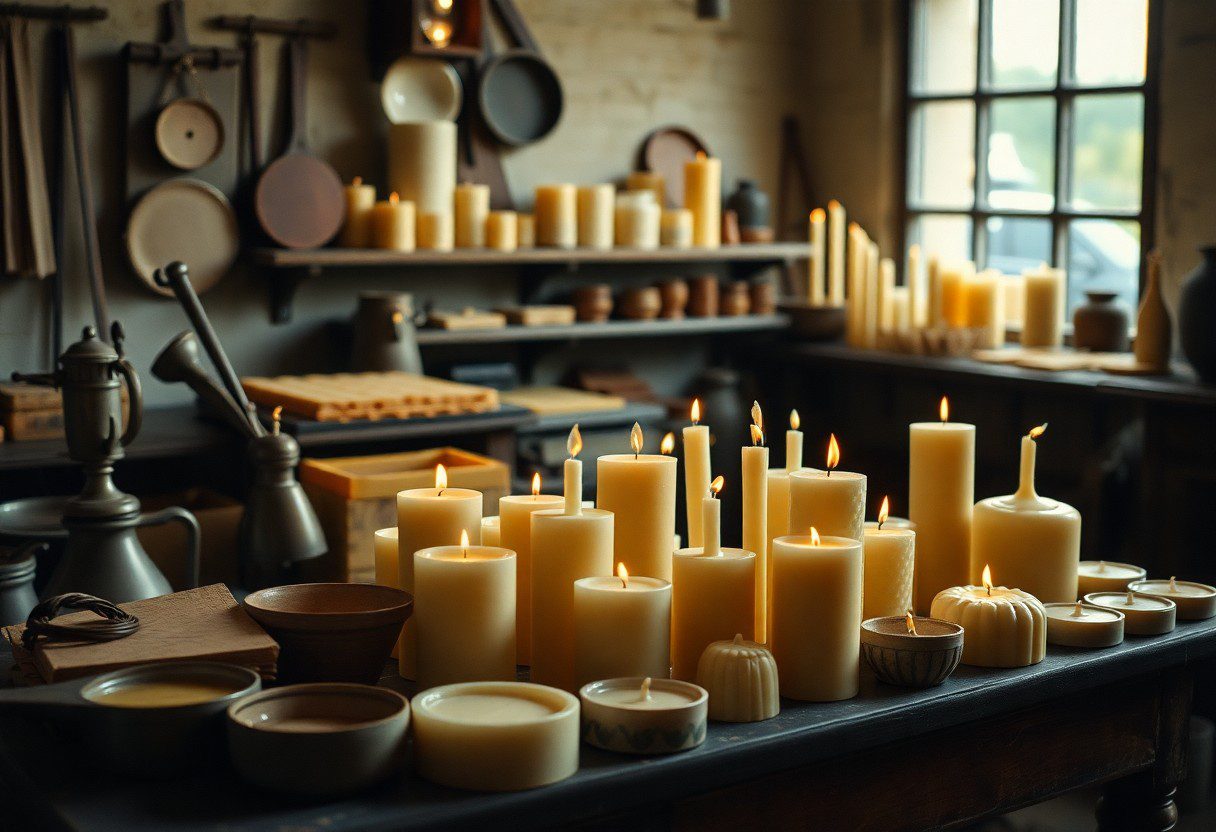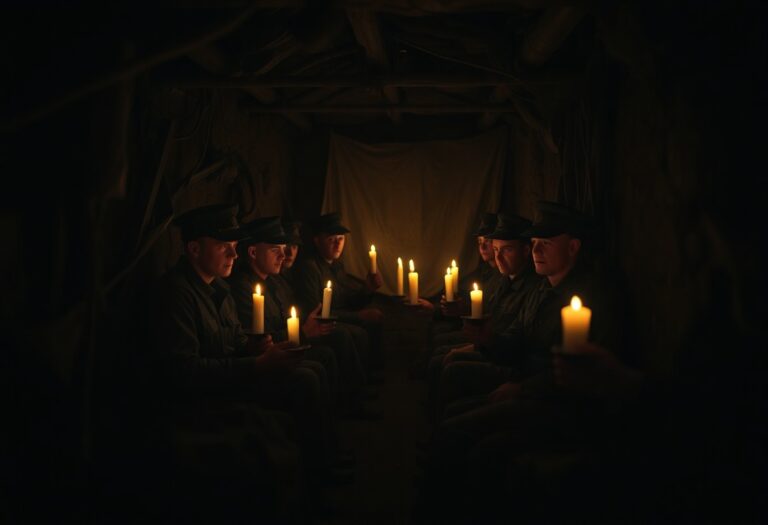Candles In Literature And Art – Light As Symbolism Through The Ages
You might not realize it, but candles have illuminated the pages of literature and the canvases of artists for centuries, serving as powerful symbols of hope, life, and the passage of time. In various cultures and eras, the flickering flame has represented spiritual insight and vulnerability, often contrasting light with darkness to signify moral dilemmas or enlightenment. This post will examine into how candles have been depicted across different artistic mediums, providing insight into their enduring role as a symbol of illumination and inspiration throughout history.
Historical Context of Candles in Art
Ancient Civilizations
To understand the significance of candles in art, it’s important to explore their origins in ancient civilizations. Candles, with their flickering flames, served more than just a practical purpose of illumination; they were also emblematic of spirituality and rituals. In ancient Egypt, for instance, candles were often used in religious ceremonies, symbolizing the light of divinity. Their use in temples and within the tombs of pharaohs highlighted the belief in the afterlife, connecting the physical world to the eternal.
Above all, the Greek and Roman cultures similarly infused candles with cultural significance. While the Greeks lit candles competitively during festivities, Romans were known to offer candles to their gods. This connection between light and the divine showcased how integral candles were in establishing a connection between the mundane and the celestial. As such, you can see how these ancient practices laid the groundwork for their representation in later art forms.
Middle Ages and Renaissance
Around the Middle Ages, candles evolved in both functionality and symbolism. They became an important tool for lighting homes, churches, and public spaces. Their presence in art during this period was often tied to themes of faith and enlightenment, with paintings depicting serene candlelit settings. It was in churches that candles took on a particularly poignant role, symbolizing the presence of the divine and providing a sense of comfort to worshipers.
Historical art from the Renaissance period further amplified the symbolism associated with candles. Artists like Caravaggio and Rembrandt skillfully employed candlelight to create depth and enhance emotional resonance in their work. Their chiaroscuro techniques emphasized the stark contrast between light and darkness, effectively illuminating both the subjects and their profound stories. In this context, a candle could represent hope, purity, or momentary clarity within a turbulent world. Thus, as you explore the art of this era, it’s evident that your understanding of candles will deepen, enriching your appreciation of their role in shaping human experience through light and shadow.
Symbolism of Light in Literature
While exploring the depths of literature, you will often encounter the powerful symbolism of light, particularly as it pertains to hope, guidance, and the illumination of truth. Light has been employed throughout the ages to represent the transition from ignorance to enlightenment, serving as a beacon for characters who navigate the complexities of their journeys. In various literary works, the presence of light, whether through literal candles or metaphoric illumination, emphasizes the themes of knowledge, purity, and inspiration that resonate deeply with the human experience.
Candles in Poetry
Candles flicker within the verses of many poets, symbolizing both vulnerability and resilience. The soft glow emitted by a burning candle evokes a sense of warmth and intimacy, often serving as a metaphor for the transient nature of life. In your readings, you may find poets using candles to represent fleeting moments of joy or love, emphasizing how easily they can be extinguished. In these instances, you can appreciate the juxtaposition between the light of the candle and the encroaching darkness, hinting at the struggles and fragility inherent in human existence.
Candles in Novels
Around many novels, candles illuminate key scenes, acting as both literal and figurative sources of light. They often appear at pivotal moments, guiding characters through darkness, whether it be in a physical sense or within their internal struggles. The flickering flames can represent the characters’ own spirits, flickering yet persistent, even in the face of adversity. This duality of candles as both light and fragility draws a connection between the characters’ journeys and their growth throughout the narrative.
In addition to their symbolic meaning, candles often enhance the atmosphere and tone of the story. They can create a sense of intimacy, inviting you into the characters’ private reflections, or serve as focal points during moments of revelation. Novels like *A Candle in the Dark* highlight this relationship between light and character development, allowing you to see how the presence of a single candle can lead to profound realizations. The contrast between light and shadow not only enriches the storyline but also mirrors the characters’ struggles against the challenges and darkness they face. Through the symbolism of candles, you can grasp the complexity of human emotions and the enduring light of hope that prevails in darker times.
Candles in Visual Arts
Some of the most compelling representations of candles can be found across various styles and periods in visual arts. From the quiet, intimate glow of candlelight in Dutch Baroque painting to the dramatic contrasts of modern works, artists have often utilized candles to convey a range of emotions, themes, and symbolic meanings. You may explore examples that illustrate The Contrasting Roles of Candles and Matches in Art, highlighting their function both as sources of illumination and as potent symbols of transition, fragility, and the passage of time. The ability of a simple candle to evoke deep curiosity about its role within an artwork attests to its lasting significance through the ages.
Painting Techniques and Candlelight
One of the most fascinating aspects of painting techniques involving candlelight lies in how artists manipulate light and shadow to create mood and depth. You’ll find that virtuoso painters, such as Rembrandt, mastered chiaroscuro—an interplay between light and dark that adds a dramatic intensity to their compositions. By using candlelight, they were able to illuminate their subjects in a way that accentuated emotional expression and heightened the viewer’s engagement. This use of light reflects both a technical prowess and a profound understanding of how to draw attention to specific elements within the artwork.
Iconography of Candles
To fully appreciate the role of candles in art, it is crucial to consider their iconography, which encompasses a range of meanings, including spirituality, human mortality, and enlightenment. Candles have traditionally represented the sacred light of divine presence, often found in religious art, where their flickering flames signify the fragility of life and the eternal soul. You may notice in various works how a single candle can symbolize a solitary presence, conveying messages of hope or sorrow, as well as the ephemeral nature of life itself.
Candles also hold potent meanings within personal narratives. They can symbolize life, death, and transformation, often appearing in moments of reflection or ritual. The warmth of candlelight invites contemplation, while its flickering flame can evoke feelings of both nostalgia and fear—an embodiment of the delicate balance between permanence and transience. Observing the use of candles in art allows you to connect with these enduring themes, enriching your understanding of the complex layers they represent within visual storytelling.
Cultural Interpretations of Candlelight
All throughout history, candlelight has held profound cultural significance across various civilizations. You may find it fascinating how, in many cultures, the flickering flame of a candle is perceived not merely as a source of illumination, but as a symbol of hope, guidance, and spirituality. The warm glow can transform spaces and moods, creating an ambiance that encourages introspection and connection. This duality of light and darkness offers a unique perspective on human existence and the search for meaning, where candlelight represents the light of knowledge and faith that dispels the shadows of ignorance and despair.
Spiritual Significance
Below the surface of this glow lies a rich tapestry of spiritual meanings that align candlelight with the divine. Numerous religions employ candles in their teachings, asserting that the flame represents the presence of the holy or transcendent. In your own explorations of spirituality, you might find that lighting a candle during meditation or prayer enhances your connection to higher states of consciousness, providing a focused point around which your thoughts can gather. The act of lighting a candle often symbolizes the calling forth of light in one’s life, and can serve as a reminder to maintain faith during challenging times.
Candles in Rituals and Celebrations
After contemplating the spiritual undercurrents of candlelight, you should also explore how it plays a significant role in rituals and celebrations. Throughout various cultures, candles mark moments of significance—from birthdays and marriages to memorials and religious ceremonies. They serve as a bridge between the tangible and the intangible, where their light can signify joy, remembrance, or the passage of time. Whether you are celebrating a joyous occasion or honoring a lost loved one, candles provide a profound way to acknowledge life’s important transitions.
Consequently, when you participate in rituals or celebrations involving candles, you are engaging in a practice that has transcended generations. The act of lighting a candle effectively transforms your environment, making it more intimate and serene. It is important to note that the colors of the candles you choose may differ in meaning, ranging from white for purity to red for passion, further enhancing the symbolism of your occasion. By incorporating candlelight into your own life events, you create an atmosphere that honors the significance of the moment, while also connecting to a deeper cultural heritage shared across time and space.
Modern Perspectives on Candles
Many contemporary writers utilize candles as potent symbols in their narratives. You will find that characters often light candles during moments of reflection or despair, embodying the struggle between hope and despair. In some novels, the flickering flame can signify the warmth of intimacy or the reminder of a loved one, serving as a metaphor for connection amidst chaos. As you investigate into modern poetry, candles frequently appear as images that conjure feelings of solitude and yearning, helping you connect with the emotional landscape of the text on a deeper level.
Candles in Contemporary Literature
Between the pages of contemporary literature, candles emerge as symbols of human experience, illuminating themes of identity, loss, and resilience. You may find that authors employ this motif to explore the fragility of life and the significance of moments of stillness amid the rushing tides of modern existence. Candles often become a focal point in pivotal plot events, serving as a catalyst for change or an invitation to introspection, drawing you further into the world they create.
Artistic Representations in Modern Art
On the canvas, artists in the modern era frequently depict candles in diverse ways, employing their light to evoke a spectrum of emotions—ranging from tranquility to tension. As you look at these works, you may notice candles can symbolize a beacon of resistance against darkness, representing the human spirit’s perseverance. The interplay between light and shadow plays a significant role in conveying the complex narratives behind each artwork, drawing you into contemplation about the essence of life and existence.
To deepen your understanding, consider how various modern artists integrate candles into their compositions, using them as metaphors for transience and the inevitability of change. Much like the wax that melts away, your own perceptions about life can be challenged and transformed through these artistic expressions. Candles become an imperative part of your viewing experience, allowing you to explore profound themes of mortality, memory, and the enduring quest for meaning in an increasingly complex world.
The Philosophical Implications of Light
Now, light has long been a source of inspiration and a fundamental symbol in philosophy. It represents not just the absence of darkness but embodies the concept of illumination in a broader, metaphorical sense. From Plato’s Allegory of the Cave to modern existential thought, light serves as a bridge between ignorance and enlightenment, prompting you to ponder your own understanding of truth and existence. The duality of light and darkness embodies various existential questions, urging individuals to seek wisdom, knowledge, and clarity in their lives. To deepen your understanding of this symbolism, you may explore articles such as The Candle as a Symbol.
Light as a Metaphor for Knowledge
After centuries of artistic and literary exploration, light has emerged as a compelling metaphor for knowledge and enlightenment. In numerous classical texts, it signifies the awakening of one’s mind and spirit, urging you to break free from the shadows of ignorance. This transformative journey often begins with the flickering glow of a candle, symbolizing the gradual illumination of your intellect and wisdom. By embracing light in this context, you are invited to challenge preconceived notions and engage deeply with philosophical inquiries that may expand your worldview.
Candles and Enlightenment Thought
Implications of candles in Enlightenment thought reflect a significant shift in the way you perceive knowledge and reason. This era championed the value of individual thought, where the flickering wick of a candle symbolized the spark of understanding. Thinkers like Kant and Rousseau emphasized the importance of self-guided exploration, urging you to rely on personal judgment rather than accepted dogma. Candles became synonymous with curiosity and intellectual freedom, illuminating the path toward rationalism and scientific inquiry.
Candles held a profound position during the Enlightenment, as they epitomized the light of reason that individuals sought to illuminate societal norms. When thinking about the power dynamics of the period, candles served as a small yet potent symbol for the struggle against oppression. With their ability to illuminate thoughts and ideas in a darkened room, these tiny beacons represent the hope for progress and liberation in a time of intellectual revolution. Thus, the candle not only brightened the physical world but also cast a radiant glow on the principles of free thought and human rights that are integral to shaping modern philosophies today.
Conclusion
Now that you have explored the significance of candles in literature and art, you can truly appreciate the depth of symbolism they carry across various cultures and time periods. From the flickering flame representing hope and guidance to the intricate designs that convey a sense of stillness or contemplation, candles serve as powerful symbols that resonate with your emotions and thoughts. They remind you of the interplay between light and darkness, offering insight into human experiences and the quest for understanding in a complex world.
As you engage with artworks or literary pieces that incorporate candle imagery, take a moment to reflect on how these symbols can enrich your interpretation and connection to the themes presented. Whether you are drawn to the intimate glow of a candle in a serene setting or its use as a metaphor for life’s fleeting moments, this exploration allows you to grasp a more profound understanding of the artistic expression and thoughtfulness that has permeated through ages. Your appreciation of these symbols can deepen your connection to the art and literature you encounter, inviting you to find meaning in the light that flickers and dances within your own experiences.
FAQ
Q: What role do candles play as a symbol in literature?
A: Candles often symbolize light, hope, and the passage of time in literature. They can represent the fragility of life and the inevitability of death. For instance, in many poems and novels, the flickering light of a candle reflects the emotional state of characters, revealing their inner struggles and desires. Additionally, candles may serve as a motif for illumination, both literally and metaphorically, suggesting enlightenment or clarity in moments of confusion or despair.
Q: How have artists historically used candles in their works?
A: Throughout art history, candles have been employed as a powerful visual element to convey mood, drama, and symbolism. In the Baroque period, for example, artists such as Caravaggio used candlelight to create stark contrasts between light and shadow, highlighting the emotional intensity of a scene. In contemporary art, candles might symbolize sustainability or personal reflection, showcasing the duality of light’s beauty and its transient nature. By incorporating candles, artists invite viewers to contemplate deeper meanings associated with light and darkness.
Q: In what ways does the symbolism of candles evolve across different cultures and time periods?
A: The symbolism of candles has evolved significantly across different cultures and eras. In many ancient religions, candles were used in rituals to symbolize the presence of the divine and to guide souls. During the Renaissance, candles took on new meanings, often embodying the quest for knowledge and the illumination of the mind. Today, candles can represent personal rituals or moments of tranquility in spiritual practices across cultures. This evolution reflects broader societal shifts in understanding light, spirituality, and the human experience through the ages.

